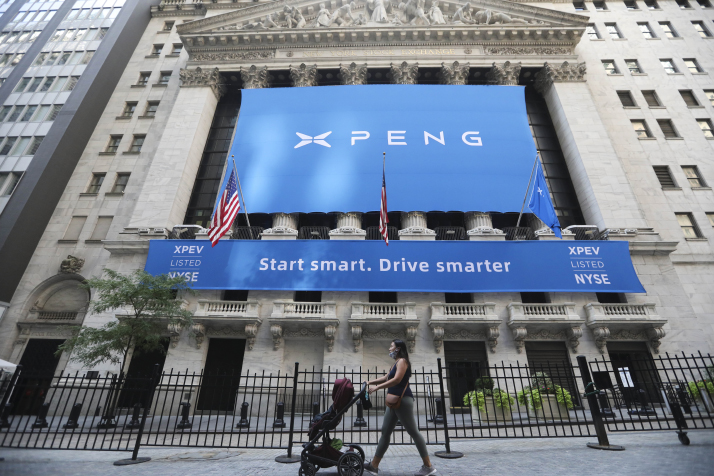| Voice |
| A look at where Sino-U.S. relations may be under the Biden presidency | |
|
|
 Employees of Air Products and Chemicals pose during the Third China International Import Expo in Shanghai on November 7, 2020. It was the first time the U.S. company participated in the expo (XINHUA)
Non-conflict, non-confrontation, mutual respect and win-win cooperation. These are the principles China follows in its relations with the U.S. With the new Joe Biden administration in the White House, Beijing Review asked Chinese and U.S. analysts for their views on why these concepts are relevant and how the world's most important bilateral relationship can go forward. On January 20, Joe Biden was sworn in as the 46th U.S. president on the steps of the Capitol, two weeks after violent protesters stormed the building. The 78-year-old takes the helm at a time when the country is both deeply divided and mired in the novel coronavirus disease (COVID-19). Amid high expectations the task ahead is tough. Biden has to tackle racial conflicts and the widening gap between the rich and the poor. He also needs to dispel anti-intellectualism, populism and McCarthyism. Unlike his predecessor Donald Trump, Biden advocates multilateralism, and under him, the U.S. might rejoin the international organizations and treaties from which it withdrew during Trump's administration. But what will be Biden's approach to China? Will he reshape the bilateral ties or allow them to deteriorate further? Priority areas Although tensions between China and the U.S. soared during Trump's time, there was huge cooperation potential as well. During Biden's administration, Sino-U.S. relations can be readjusted. China and the U.S. could cooperate in five primary areas despite their differences. Pandemic prevention and control. The U.S. has suffered more than 400,000 deaths in one year due to COVID-19. Biden announced that the U.S. will return to the World Health Organization on his first day in office and it is hoped the U.S. can work together with China to control the pandemic. Economic recovery. The International Monetary Fund and other international organizations have emphasized that the world economy entered the deepest recession in 2020 since the Great Depression in the 1930s. Almost all major economies experienced contraction, China being the only exception. It is estimated that China could account for 17 percent of global GDP in 2020, whereas China and the U.S. together could represent over 40 percent. If the U.S. achieves recovery, the world would be led out of the recession faster. Energy. After its shale gas revolution, the U.S. became the top producer of oil and gas. China is the largest importer of energy, sourcing over 70 percent of its oil from overseas. Though it makes sense for the two countries to be partners in the energy sector, their relations hit a rough patch in the wake of the trade frictions initiated by Trump. But it is America's loss since China has diversified energy import sources, from the Middle East to Russia and Myanmar. If the U.S. continues its confrontational stance, it will risk losing access to a lucrative market. Digital economy. The two countries can collaborate more in cyberspace governance as well as digital trade and manufacturing. The U.S. boasts eight of the world's top 10 Internet companies while the remaining two are Chinese enterprises. While the U.S. is the largest digital innovator, China has the largest applications. Cooperation between them will produce a huge aggregation effect and drive the development of the global digital economy. Global governance. The United States made substantial contributions to building and maintaining the international order and rules after World War II. But unfortunately, the Trump administration went out of its way to demolish what the U.S. built. The Biden administration should go back to these rules and institutions to efface the chaos and unpredictability.  Joe Biden is sworn in as the 46th U.S. president in Washington, D.C., on January 20 (XINHUA)
U.S. miscalculation The U.S. positioned China and Russia as threats in its National Security Strategy report of 2017. This was the first time China was regarded as the United States' major threat and competitor, marking a departure from the prior administrations' perception. The May 2020 report, United States Strategic Approach to the People's Republic of China, affirmed its perception of China as its biggest strategic competitor. The shift came for several reasons. Foremost was China's rapid growth. When China adopted the reform and opening-up policy in 1978, its GDP accounted for less than 2 percent of the global output. Today it is the world's second largest economy. When the two countries established diplomatic ties in 1979, China's GDP accounted for less than 5 percent of the United States' but the ratio jumped to 67 percent in 2019. Its 2020 GDP is projected to be 75 percent of the U.S. Meanwhile, China's manufacturing output has led the world for 10 consecutive years and is still rising. It's a different picture for the U.S. When World War II ended in 1945, the U.S. trade volume accounted for nearly 50 percent of the world's but in 2018, the number shrank to about 10 percent. Although the U.S. is still the largest market, the proportion of its total retail sales of consumer goods in the world keeps falling, while that of China is on the rise. In this context, the U.S. position toward China has evolved from doubts to anxiety, misjudgments and strategic shifts. Also, the U.S. is worried about losing its hegemony, especially its dollar hegemony, which has brought it tremendous advantages. The hegemony of the U.S. supports the supremacy of its currency while the dollar supremacy consolidates American hegemony. If this mutually supportive relationship is broken, sustaining U.S. prosperity would be difficult. In addition, the U.S. recognizes it will be increasingly unable to use its strategic advantage to contain China in the future. So far, its enormous advantages in technology and science have been an effective tool. But no matter how cutting-edge American technology is, it needs the middle and downstream industries to get the components for the final product and many of these are in China. It also needs the Chinese market for its hi-tech companies. For example, 60 percent of the chips manufactured by American companies Qualcomm, Broadcom and Intel are exported to China. If the Chinese market rejected these chips, these companies would suffer a heavy loss. Though the administration of Trump clamored to "decouple" from China, in reality that is impossible. The annual sales revenue of U.S.-funded enterprises in China reaches $700 billion, and 97 percent of them are profitable. They are less likely to give up the Chinese market.  Chinese electric vehicle maker Xpeng displays its logo at the New York Stock Exchange on August 27, 2020, the day it was listed there (XINHUA)
Possible scenarios For China, confrontation with the United States doesn't figure in its development plan. Its preoccupations are different. Despite the remarkable progress, it still faces various problems. For example, though absolute poverty was eradicated in China last year, it still has a long way to go before relative poverty is addressed. China's per-capita GDP is just one sixth that of the United States. In the future, the bilateral ties have three possibilities: The best scenario is that wisdom will prevail and the leaders of the two countries will bring the relationship back on track. It has never been China's goal to replace the U.S. Its focus has always been its own development. The second possibility is a mix of cooperation and containment. Some degree of cooperation will be maintained since Washington realizes that total containment measures China will be met with countermeasures. The worst-case scenario is that the U.S. will continue to keep up the trade, technology and finance pressure on China, and step up interference in China's domestic affairs. This will mean all-out confrontation and both countries will suffer. The author is chief economist with the China Center for International Economic Exchanges (Print Edition Title: Heads or Tails?) Copyedited by Sudeshna Sarkar Comments to yanwei@bjreview.com |
|
||||||||||||||||||||||||||||||
|